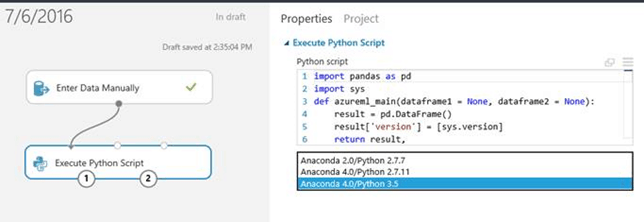Two years ago, Microsoft introduced Azure Machine Learning, a cloud service for building predictive analytics solutions with a developer friendly interface. The new platform is a powerful tool that brings together the capabilities of analytics tools and algorithms developed for several Microsoft services to allow developers to easily build and deploy predictive analytics solutions.
As of today, many data scientists are used to build machine learning models using the R or Python programming languages, but not relying on the latest runtime and package versions which have the newest features and bug fixes could be problematic with Azure Machine Learning. As Microsoft explained in a blog post on the Machine Learning blog today, Azure Machine Learning provided a backward-compatible runtime for existing R and Python models that relied on older versions, but “you were limited to a single version of each runtime and packages that were compatible with that runtime.”
To ease the work of developers, Microsoft has updated its cloud service to support multiple R and Python versions:
You can choose a newer version when building a new experiment, or you can update existing scripts to run under a newer version. Or you can keep using an old version if your legacy model depends on it. The supported versions include:
- CRAN R 3.1.0
- Microsoft R Open 3.2.2
- Python 2.7.7 with Anaconda 2.0 distribution
- Python 2.7.11 with Anaconda 4.0 distribution
- Python 3.5 with Anaconda 4.0 distribution.

While these new additions should give more flexibility to developers, Microsoft added that “all R and Python modules in same experiment must use same versions, and that Create R Model and custom R modules are still limited to CRAN R 3.1.0.” We invite you to get more technical details on the blog post over here. If you’re familiar with Azure Machine Learning, let us know in the comments what do you think of these new additions.

